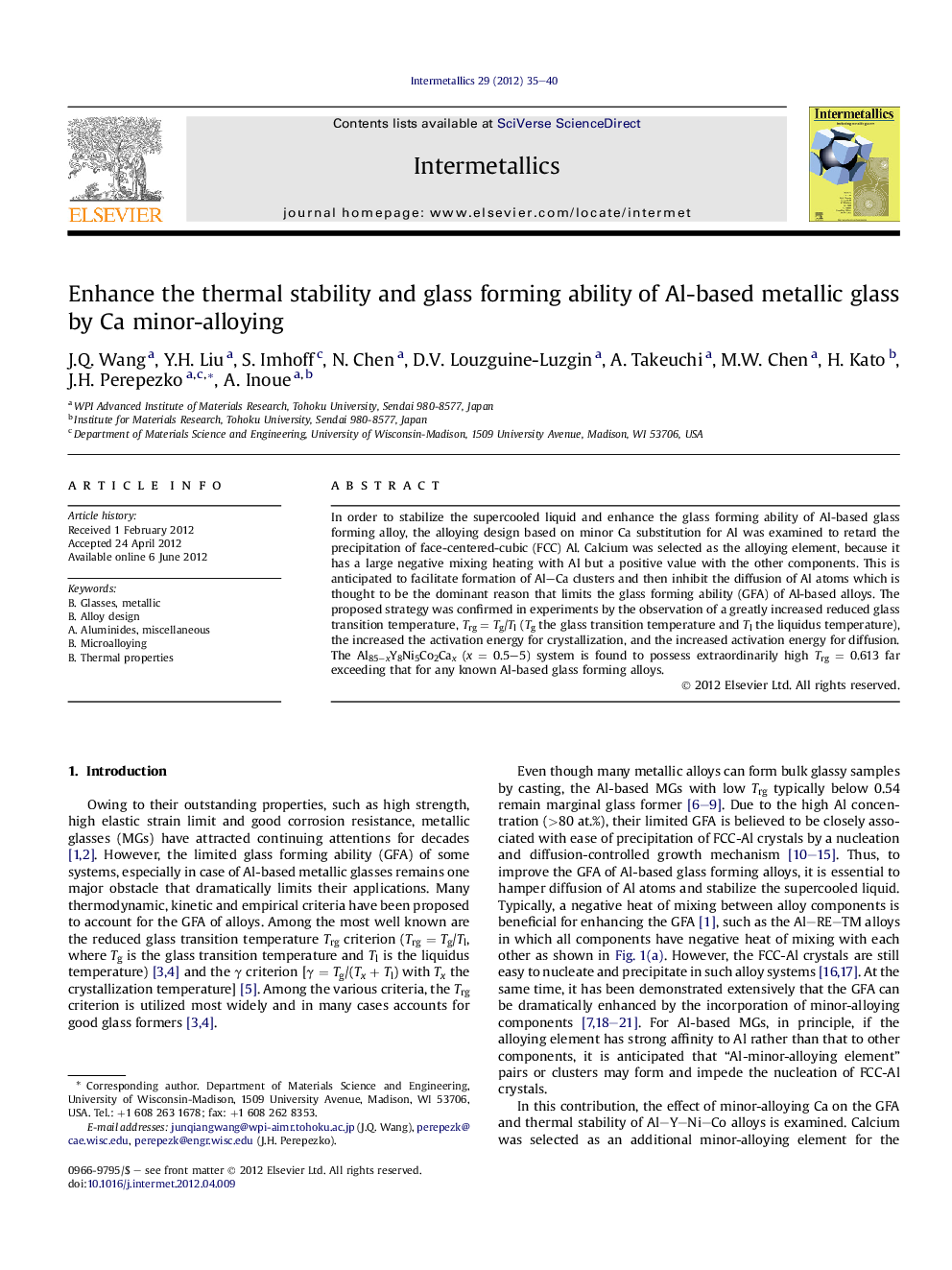| Article ID | Journal | Published Year | Pages | File Type |
|---|---|---|---|---|
| 1600428 | Intermetallics | 2012 | 6 Pages |
In order to stabilize the supercooled liquid and enhance the glass forming ability of Al-based glass forming alloy, the alloying design based on minor Ca substitution for Al was examined to retard the precipitation of face-centered-cubic (FCC) Al. Calcium was selected as the alloying element, because it has a large negative mixing heating with Al but a positive value with the other components. This is anticipated to facilitate formation of Al–Ca clusters and then inhibit the diffusion of Al atoms which is thought to be the dominant reason that limits the glass forming ability (GFA) of Al-based alloys. The proposed strategy was confirmed in experiments by the observation of a greatly increased reduced glass transition temperature, Trg = Tg/Tl (Tg the glass transition temperature and Tl the liquidus temperature), the increased the activation energy for crystallization, and the increased activation energy for diffusion. The Al85−xY8Ni5Co2Cax (x = 0.5–5) system is found to possess extraordinarily high Trg = 0.613 far exceeding that for any known Al-based glass forming alloys.
Graphical abstract(a) The mixing heat between the elements for the traditional Al–TM–RE metallic glasses. All the elements share big negative mixing heat with each other. (b) The additional element Ca has big negative mixing heat with Al while positive mixing heat with other composition elements. (c) Comparison of crystallization activation energy (Ea,p1) of various Al-rich metallic glasses. The yellow shade zone corresponds to the Al self-diffusion activation energy. (d) The reduced glass transition temperature Trg = Tg/Tl versus Ca concentration.Figure optionsDownload full-size imageDownload as PowerPoint slideHighlights► Ca is used to enhance the thermal stability of Al-based metallic glasses. ► Ultra-high crystallization activation energy Ea,p1 = 323 kJ/mol is achieved. ► High Trg = Tg/Tl = 0.613 is achieved. ► The formation of Al–Ca clusters retards the fast diffusion of Al atoms.
